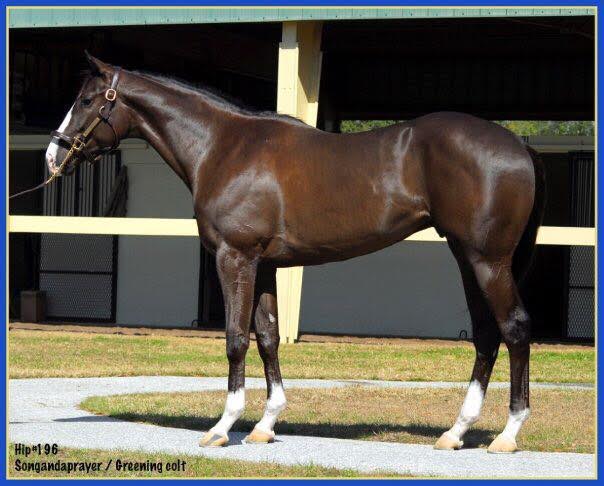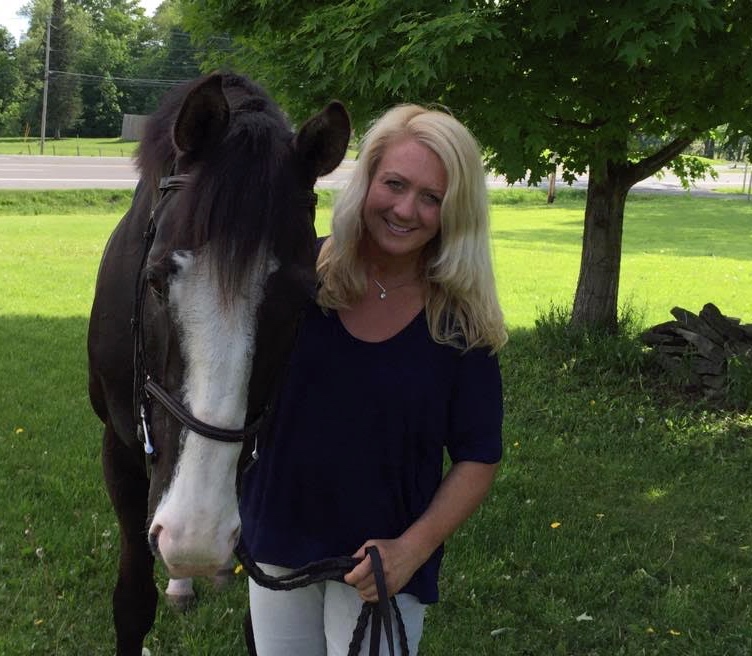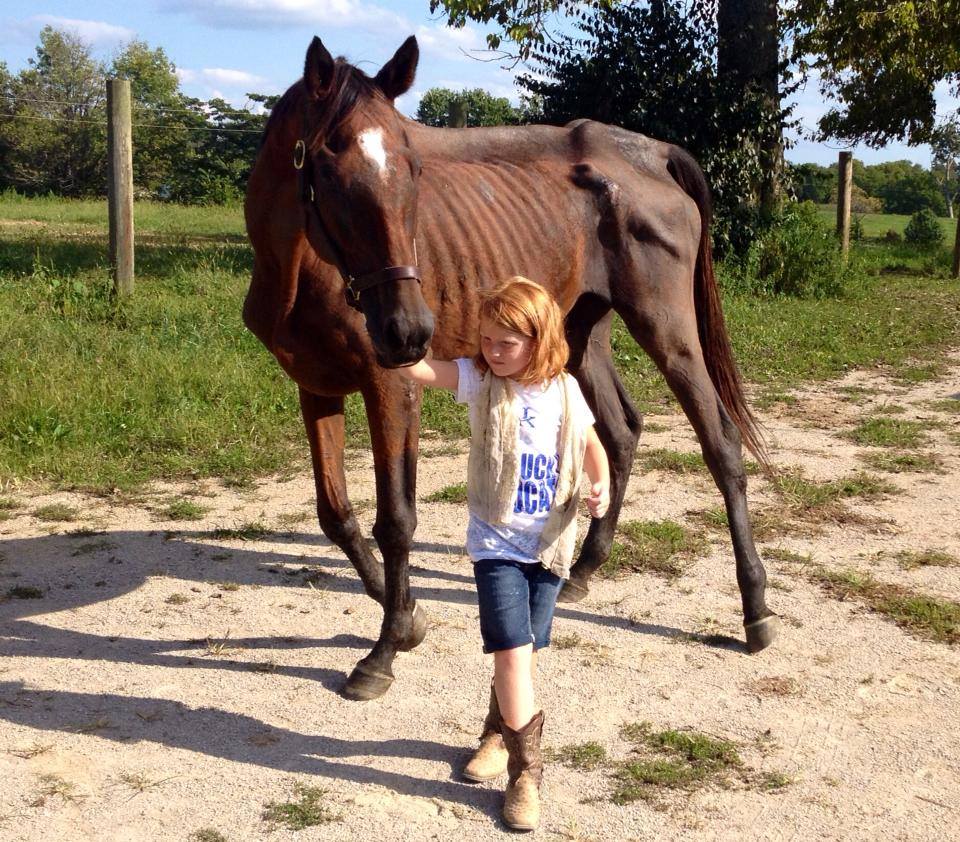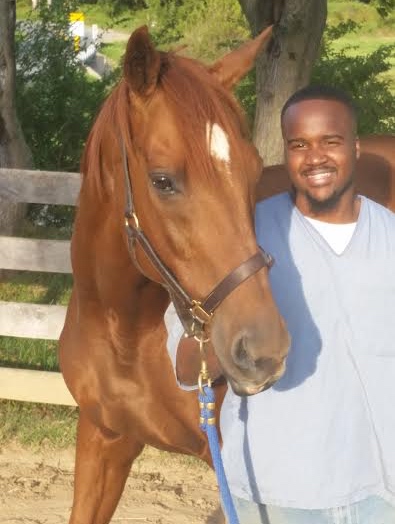Not everyone was thrilled with the return of Green Monster.
While visually impressive, he had terrorized several trainers and different racetracks in a 13-race career that earned his connections more than $140,000.
Now, he was back.
“He was a tough son of a gun,” said Jennifer Dahlman, who runs Green Acres Show Stable in Cazenovia, NY. “I remember one race where he had two guys handling him and he threw them off like they were two fleas.
“They don’t come any better looking than him, but he was too big and a goofball on the track; I think he went through about eight different trainers. He only got back a few weeks ago. But as soon as I saw him, I was pretty excited. He came off the van and went right up to his buddies. His closest buddy is `Nemo,” a Shetland pony, and they get along great. But I bet when Nemo saw him coming, he probably rolled
his eyes and said, `Oh, no!”
Green Monster
Sire: Songandaprayer
Dam: Greening
Foal date: April 8, 2007
Earnings: $141,438 in 13 startsIn just a few weeks, however, Green Monster has turned himself around under Dahlman’s supervision and even put himself on the market, as per a recent Green Acres post:
“Off the track for a couple of weeks. Working under tack and trotting poles and starting crossrails. Needs experienced rider and handlers. Nice mover and half brother won classes at major shows as a hunter. Very sweet and good with other horses for turnout.”
The quick transition has been particularly pleasant surprise for Dahlman. A former assistant to Mike Hushion, one of the top Thoroughbred trainers in New York, Dahlam later worked as farm manager at Stonewall Farm in Westchester County, which is owned by one of Calvin Klein’s co-founders and former New York Racing Association Chairman Barry K. Schwartz.
About 10 years ago, Dahlman started Green Acres Thoroughbreds to tend to the business of buying, selling, breeding and developing Thoroughbreds. She is currently in the process of transitioning to the
realm of show horses.
Along with her expertise, she brings a solid reputation. Dr. Jerry Bilinski, who operates Waldorf Farm in North Chatham, N.Y., has frequently sent her horses.
“We do send Jennifer horses and she finds them homes and let’s us know how they are doing and even photographs them at horse shows,” said Dr. Bilinski, a veterinarian who also sits on the Board of Directors of
the Thoroughbred Retirement Foundation. “She takes horses back that don’t work out and finds them new homes. She does it more professionally than most, operates a very attractive facility is attractive. I would highly recommend her.”
What sets Dahlman apart in her approach to re-homing Thoroughbreds is her belief that most of the horses she gets are more than useful.
“I come pretty close to being offended when someone says that I rescue horses,” she said. “To me, unless a horse comes here from a kill pen or an auction, he’s not a rescue. I get horses that just can’t race any more because of injury or if they are just not good enough to race or have lost interest. But horses come here sound, well cared for and up-to-date on vaccinations. These horses are in incredible condition. They just need to find a new job.”
Green Monster is her shining example.
Green Monster was owned and bred in New York by Dahlman’s father, Ernie Dahlman, and his partner, Eugene Hauman. They are, respectively, a professional gambler and a retired high school social studies teacher. They are also active in breeding, racing and taking care of their horses, some of which they have in partnership with Schwartz.
Green Monster, now 8, debuted at the races on March 6, 2010 at Gulfstream Park.
“The gate opened up and he stood there like he was saying, `Huh?’” Dahlman said. “But when he finally kicked in, it was like VROOM! He had been so far back and closed so fast. He wound up getting beaten a
length by Friend or Foe, who turned out to be a pretty nice horse.”
That performance piqued a lot of interest, and Dahlman and Hauman entertained large offers to sell him. They decided to keep him, at least for a bit longer.
A series of injuries, including a hairline fracture of his cannon bone and a suspensory injury, not only put Green Monster on the shelf periodically, but made him that much tougher when he came back to the
races.
If she chose to, Dahlman could have said that Green Monster was named for The Incredible Hulk and would have had plenty of people believing her.
“Layoffs were a big problem for him,” Dahlman said. “He would be here and around other horses and, and he would be happy just hanging out. But he wanted to a racehorse, and when he got that into his head, he was really tough. He would be here barefoot, and when we tried to put shoes on him, well, it just wasn’t too easy.”
Green Monster was even gelded early on, but it seemed to have little effect.
What has made a difference in Green Monster is his return to Green Acres and Dahlman’s supervision.
“I gave him a month off to put on some weight and wind down and started him back up a week or so ago,” Dahlman said. “He’s been absolutely fabulous.
“My business manager says that everything here is for sale, but I’m not sure about Green Monster. I may just keep him.”
—Francis LaBelle is a staff writer for the Thoroughbred Retirement Foundation.











